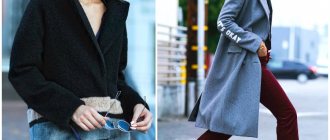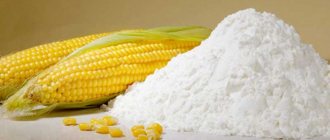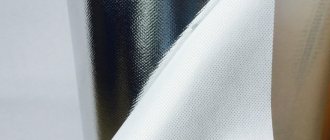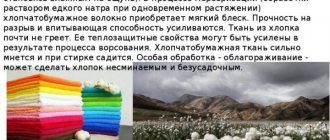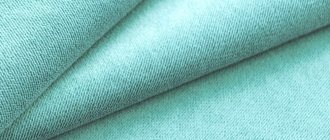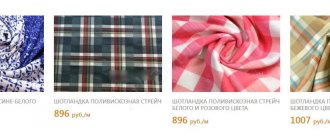Properties and characteristics
Let's start the review with a definition. What kind of fabric is chintz - this is a lightweight material, invented by Indian craftsmen in the eleventh century, made from harsh calico threads, which are obtained from cotton. Density is 80-100 g/m2.
There are two varieties:
- Printed - with a pattern;
- Plain colored (plain color).
Initially, calico threads are gray, untreated. The canvas gets white color after processing. Let's look at the main characteristics of chintz:
- The weaving is plain, the warp and weft threads are connected according to the “one through one” pattern;
- Density is 80-100 g/m2.
Production Features
Calico is based on calico threads, which are made from cotton. Calico can be called a semi-finished fabric product. Cloths for cleaning are often made from it. These threads are never bleached, so they have a natural gray tint.
The production process itself involves several technological stages:
- Collection of cotton seeds.
- Cleaning cotton from various impurities.
- Isolation of fibers from cotton bolls. For this purpose, special equipment is used - fiber separation machines.
- Pressing and twisting into a thread called calico. Its length is 6-10 mm.
- Fabric production using plain weave. The warp and weft threads bend around each other according to the 1 through 1 principle. The result is a double-sided fabric. The reverse side can only be distinguished if there is a print on the surface.
- Drawing. Previously, various devices were used for this purpose: hammers, stencil boards with ornaments printed on them, shafts. Today, the full production cycle is carried out automatically - on machines.
To obtain a white shade, the calico semi-finished product is subjected to many dyeing and finishing operations. Modern chemical compositions for coloring are durable and safe. Therefore, the fabrics receive a rich, bright color that does not cause allergies.
It is no coincidence that textile workers call calico a semi-finished fabric product. It serves as the basis for the manufacture of various materials: thin muslin, lightweight madapolam (named after the Indian city), which has a woven base and nitrocellulose leatherette coating.
Features of coloring
Chintz is an inexpensive textile. This is explained by the simplicity of technological operations. Surface painting is often used. That is, the material is first obtained, and then paint is applied to it. Dyeing of individual fibers is not used, since this method would lead to an increase in the cost of the finished product.
Let's briefly talk about the main stages of production:
- Collection of cotton fibers;
- Sorting and cleaning;
- Carding of fibers and preparation for spinning;
- Direct spinning;
- Machine weaving;
- Painting canvases.
The result is a bleached or dyed material!
Additionally: Jersey fabric - what it is, read in another review.
Take a look at the photo of chintz fabric to see the variety of colors and shades. Now you know what chintz fabric looks like, what features it has - it’s time to talk about positive and negative qualities.
Advantages and disadvantages
We have already figured out what chintz fabric is made from - it’s time to talk about the features. The next important part of the review is the advantages and disadvantages of the canvas. It is these indicators that play a decisive role when purchasing finished products or rolls of material.
First, let's talk about the advantages:
- You already know that chintz is a cotton fabric. This ensures environmental friendliness and natural fibers;
- The color remains bright, the pattern does not fade;
- Does not cause allergic reactions;
- Very easy to use and maintain;
- Easily allows moisture and air to pass through, ensuring proper heat exchange;
- It has a low affordable price per 1 meter with excellent quality;
- Buyers have access to a huge selection of products that are used in a variety of areas - more on this below.
Be sure to read: Oxford fabric - what it is and what its properties are.
Take a look at the photo to see what chintz fabric looks like - it really is an attractive, bright textile. But it also has some minor disadvantages, let’s note them in more detail:
- Deteriorates when exposed to high temperatures;
- Wrinkles easily - be sure to iron before use;
- Natural fibers wear out quickly and the appearance can quickly deteriorate.
You know the characteristics and composition of chintz fabric - evaluate all the pros and cons, and then go to the store! And now it’s time to talk about what you can sew from chintz yourself or buy in a store.
Read more about similar matters:
- Denim fabric - description and properties;
- Ranfors fabric - composition, reviews;
- What is rib material?;
LiveInternetLiveInternet
So, what kind of fabric is chintz? Chintz is a lightweight printed cotton fabric produced in a plain weave from medium-staple cotton. Dresses, sundresses, linen and children's items are made from chintz.
Initially, chintz was made in Bengal (India), and from the 17th century - in Russia. In Europe, chintz became a fashionable fabric in the 18th century and was quite an expensive fabric due to its hand-printed fabric. In the first half of the 19th century, a multi-color printing press appeared, which produced high-quality printed material, while the capabilities of the first printing machines were only one or two colors.
And here it should be said about Russian calicoes; they were distinguished by their high quality, bright colors, and complexity of ornament. Russian calicoes contained not just geometric or floral forms, but also multi-story complex compositions - for example, landscapes, illustrations for literary works, pastoral scenes.
Ease of manufacture reduced the cost of calico. All segments of the population began to sew clothes from the fabric, and also made upholstery for furniture and walls. The most famous and leading producers of chintz in Russia were the manufactories of the merchants Tretyakov, Prokhorov, and Morozov.
Chintz from the early USSR
And the most common fabrics, especially among the people, at the end of the 18th - 19th centuries. there were calico and calico calico - printed calico on a red background. It was a special fabric. Its coloring was carried out using a complex and quite old method - dyes from madder root. The ornament was applied by etching printing, that is, the paint destroyed the background color, and a new color was formed in this place.
Antique chintz dresses
In the 70s of the 19th century, natural paints were replaced by chemical ones (alizarin). The colors have become even brighter and the patterns more expressive. High quality and originality of ornaments brought Russian kumachs world fame. In 1846, the Baranov merchants founded the largest enterprise (in Soviet times, a plant named after the Third International) for the production of calico calico.
The designs on their calicoes were distinguished by pure, bright colors: bright yellow, light green, blue, to which black, white and gray were added to make them more graphic. The peculiarity of the coloring was to create the impression of a second layer, which resembled the reflection of the main pattern. The calico chintz depicted bouquets of bright flowers, leaves and berries, baskets of fruit, garlands of flowers and grapes, images of stars, cords with tassels, as well as “bean” and “cucumber” motifs, which once came to Russia from Persia and received a new interpretation. And the main flowers were cornflowers, flax, poppies, bells, and flowers.
Russian kumachi looked impressive and majestic; the fabulousness of a magical land was felt in the patterns.
Usage
Above we described in detail what kind of fabric chintz is. It is the properties of the material that determined the breadth of its use:
- Men's shirts;
- Baby diapers;
- Bed sheets;
- Covers for decorative pillows;
- Curtains;
- Furniture covers;
- Underwear and homewear;
- Tablecloths and other kitchen textiles;
- Towels and home textiles;
- Kids' things;
- Women's clothing - dresses, blouses, sundresses and more.
Useful: types of fabrics for bed linen and their characteristics.
We talked about what is good about this type of fabric, and found out what people sew from it - by hand or in production. And next in line are the rules and recommendations for caring for purchased items.Use of chintz fabrics
From birth we live in a world of chintz.
A wide variety of children's items are made from environmentally friendly materials: diapers, sets for strollers and cribs, clothes for children, starting from infancy.
Adults also enjoy wearing cotton clothes. Sundresses, dresses, blouses, shirts, skirts, shorts, light trousers - this is an incomplete list of summer clothes made of chintz. It is also indispensable in the production of home clothes (robes, home suits), sleepwear (nightgowns, pajamas), bedding and home textiles (curtains, bedspreads, tablecloths, etc.).
And chintz is the favorite material of needlewomen. Fabric appliqués, soft toys, homemade dolls, patchwork items made from chintz allow you to fully express your creativity and turn fantasy into reality.
Rules of care
Calico material is very easy to care for - it is enough to follow the simplest rules to preserve all the features of the item. We will tell you what recommendations you should follow to avoid unpleasant situations!
- You can wash natural fabric by hand in warm water or in a machine;
- Before first use, you need to wash the product in cold water by hand - this will help soften the material and preserve the brightness of the colors;
- To avoid the appearance of rigidity in the structure, it is worth washing the canvas with other cotton fabrics;
- If you don’t want to worry about things shrinking during washing, choose the correct temperature setting for the machine – fifty degrees;
- Be sure to turn things inside out;
- To preserve color, you should use soft powders and gels and avoid bleaches;
- In order to avoid shrinkage after washing, it is worth drying the fabric in a straightened form in a dark, cool place;
- Items must be ironed - you must first moisten them with water. You can use steam to quickly remove wrinkles.
Read useful tips on how to remove green stains from clothes in 1 minute.
Now let's talk about how calico differs from chintz and satin - many often confuse these types of material. Also find out the composition of bumazea at the link, it’s very interesting.
But what about the cons?
What disadvantages could such textiles, which are positive in all respects, have? But there are not so few of them, and they are generated by the same composition.
- This fabric can shrink after washing, especially if you wash it in hot water (and even rinse it in cold water). To avoid such an unpleasant surprise, you need to buy products made from chintz that are not of the most fitting cut, and when sewing yourself, first wash the fabric in warm water.
- Chintz (especially printed chintz) often fades. It's all due to the superficial method of painting. It reduces production costs, but reduces the durability of the design.
- For the same reason, paints fade greatly in the sun over time, and the fabric loses its neat appearance.
- When exposed to direct sunlight, fabric fibers are destroyed quite quickly.
- Calico is not characterized by increased dimensional stability. When worn, it often wrinkles, and with prolonged use it gradually becomes shapeless.
All these qualities lead to the fragility of chintz products: they only last for a couple of seasons. But this nuance is more than compensated by the low price: such things, as a rule, are not a pity, new ones can be bought without much damage to the wallet.
Advice
To make chintz items lose their shape less, make the ironing process easier. For this product, you need to try not to overdry it, shake it well before hanging (this will help reduce the number of strong creases from washing), and sprinkle with water when ironing.
Differences
Above you read the description and photo of chintz fabric - which means you remembered that it is made from cotton fibers. Cotton is used to produce materials such as calico and satin. It's time to talk about how they differ.
First, let's discuss the difference between chintz and calico - the difference lies in the method of weaving the threads. Weaving affects the density and weight of the material!
| Chintz | Calico |
| Low thread density | Weaving threads alternately, there is additional overlap in each of the two weaves |
| Light weight and soft | The structure is dense, there is no looseness |
| For one cm2 of fabric, 30-40 threads are used | For one cm2 of fabric, 45-65 threads are used |
| Weight m2 is 100 g | Weight m2 is approximately 110-145 g |
| Shrinkage under water is 5% | Shrinkage reaches 7% |
Let us briefly note how satin differs:
- Satin does not fade and easily tolerates high temperatures;
- Does not shrink and does not require ironing;
- It has a pleasant shine and smooth surface.
Let us note what is the difference with cotton, is it the same thing or not. Cotton fibers form the basis for the production of linen, but they cannot be called analogues. We described in detail the composition of microsatin at the link.
Reviews
Customer reviews confirm that the quality of the material has increased significantly in recent years. Now you also know what chintz fabric is, and you can decide to buy a towel, shirt or dress.
Yana: I really love chintz! What a large assortment of sundresses and dresses you can sew for yourself for the summer! And what a choice of colors...oh! Even if I don’t come to the store, my hands always reach out to him! If you are still learning to sew, I advise you to practice on it! For example, sew a sundress or a dressing gown. Alina: For me, chintz is the ideal material for the summer! It allows air to pass through perfectly and also removes moisture well! I also love the way it sits on the figure and that. that it has many interesting colors, just for the summer) In general, I recommend it to everyone)))
